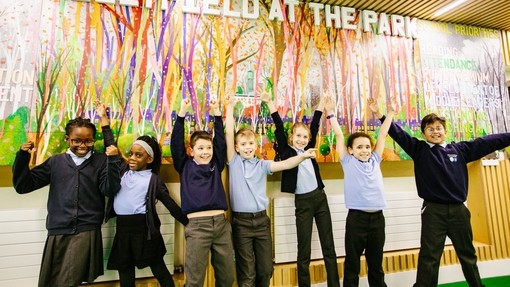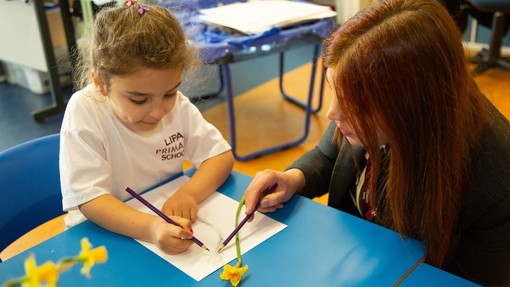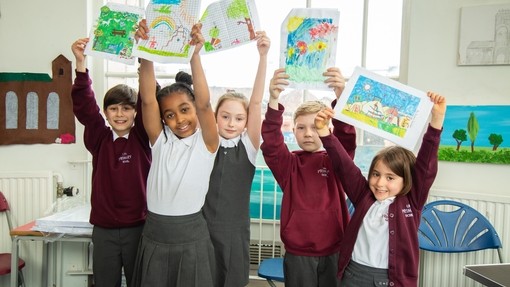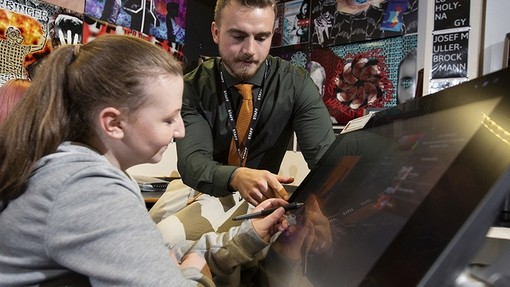
How Reay Primary School are using the arts to strengthen their diverse community
Creativity is at the heart of Reay Primary School’s values, particularly when celebrating the multicultural identities of its pupils. They’ve adopted a cross-curricular, topic-based teaching and learning method in which the arts are embedded throughout the curriculum, aiming to foster an environment that encourages creative thinkers, inquisitiveness, and inclusion.
Reay is a mixed-state school located in Lambeth, South London. They are a one-form entry school with 237 pupils from diverse backgrounds, both culturally and economically. Nearly half of pupils require free school meals and 50% are pupil premium, with 44% of pupils speaking English as an additional language and 17% on the SEN register. Lucy Hall, Art leader and teacher, discusses how they use creativity to strengthen their school’s diverse community.
Adopting a cross-curricular, topic-based teaching method
Situated in a multicultural area, the arts play a vital role in engaging our children with the world around them. When designing our curriculum, we often draw upon the plethora of students’ diverse backgrounds, placing creativity at the forefront of learning to create a joyful and positive atmosphere.
We have adopted a cross-curricular, topic-based teaching and learning method in which creativity and culture are embedded throughout our curriculum. This approach involves forming connections between different academic subjects and planning creative teaching pathways with interconnected topics.
For example, Year 4 pupils recently undertook a cross-curricular project, using India as the central topic. Pupils were taught about the richness of Indian culture, art, and heritage. We cooked Indian food and then painted scenes of the Ganges using the same Indian spices. In literacy lessons, pupils then reviewed the food and wrote sensory poetry describing the sights and sounds of the Ganges from their paintings. We taught them about traditional Indian woodblock printing practices and created collagraph blocks to print with, resulting in beautiful designs which could be displayed in class. At the end of the project, pupils put on a performance for the rest of the school and their parents about the life of Gandhi. Through this, the children had the chance to act, dance, sing, design, and make props. This was one of our first live performances since lockdown and it was a very special moment for all involved.

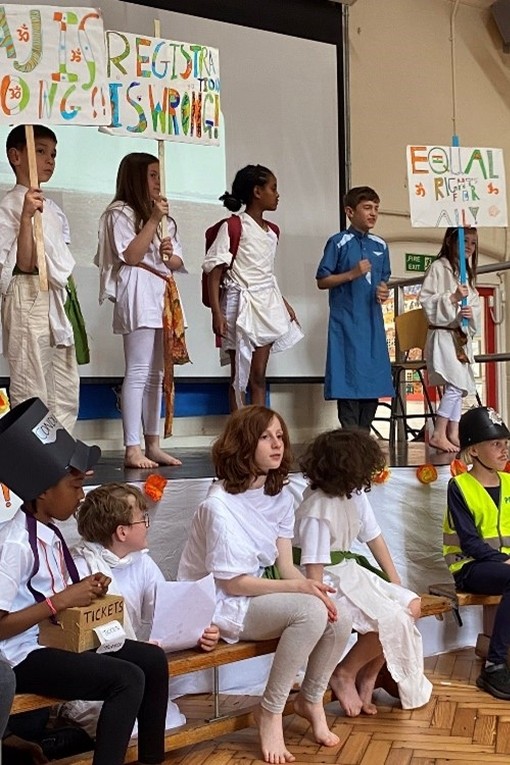
We also embed topics such as Black History into pupils’ learning throughout the year, not just in October. Through our art and design curriculum, I have endeavoured to include artists and designers from a range of backgrounds, as well as ensuring that women are well represented.
I recently ran a successful project with a Year 5 class inspired by the work of contemporary British artist, Lubaina Himid. We explored how pupils see themselves through mixed media aiming to celebrate their varied cultural heritages. Pupils created mono-printed self-portraits showing different aspects of their personalities, using traditional patterns which celebrated their cultural heritage.
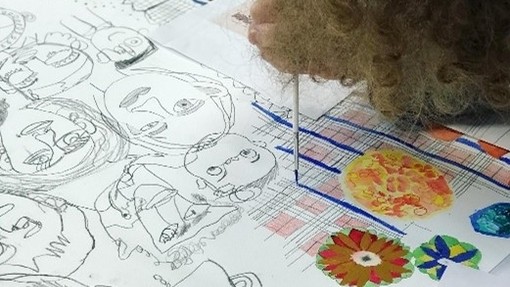
Connecting with the wider school community
One of our key aims is engaging with our wider school community, and we plan to strengthen our relationships with parents and carers through school community events. This year, we have re-established our school’s Arts Council with pupils from years 3 to 6, whose responsibilities include organising our creative events. They devise initial activity ideas, prepare resources and help run the event on the day. We also try to engage pupils who are struggling academically or with other issues but show a real commitment to arts and design. Most recently, they’ve been preparing for our annual ‘Big Draw Party’, where we invite families to draw with their children in a fun and relaxed environment.
From experience, it is often challenging to engage parents from a mix of socio-economic and multicultural backgrounds. For a myriad of reasons, from work commitments to parents feeling like school events aren’t for them, it is disheartening to feel that a more representative cohort of families are not present in these community events. With our ‘Big Draw’ parties, we’ve created an inclusive, welcoming environment which has been very successful. I think this is for several reasons; it is a very relaxed setting in which children can draw with no pressure for their parents to participate unless they want to (they usually end up doing so!), it takes place straight after school and there is no time commitment; families can stay for 10 minutes or the whole two hours. We usually have to politely ask families to leave so that we can clear up!

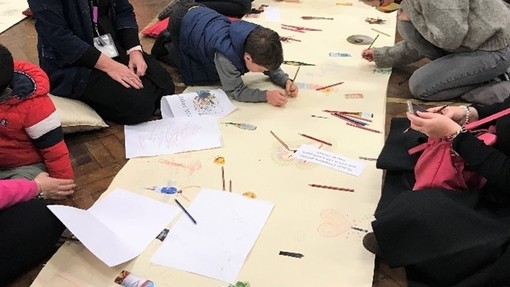
Other community events that we have started up again include class dramatic performances and musical concerts. There are also plans for art exhibitions and whole school day events celebrating ‘World Earth Day’ and ‘Outdoor Classrooms Day’ in which parents will be invited to come along and get involved.
Connecting with cultural organisations
We advocate for authentic creative education at every opportunity and have developed strong working relationships with local art organisations. For example, the Van Gogh House, whom we’ve collaborated on various exciting projects for pupils and teachers at both the house and within the school. Most recently, contemporary Dutch artists in residence Veerle Melis and Liza Prins came to Reay to lead a weaving and stitching workshop for pupils, exploring over-productivity and waste in today’s textiles industry. I initially emailed Van Gogh House in the hope they’d be interested in doing a one-off project with the school, so don’t be afraid to take the chance – it can result in great things!
We regularly participate in arts competitions as they’re great ways to engage your pupils in exciting projects that often incorporate topical and pertinent issues. Being in London, we’re very lucky to have lots of opportunities, such as the Open City’s ‘Architecture in Schools’ programme and the annual Mayor of London’s Fourth Plinth Award. However, there are also fantastic national and international competitions to get involved in, such as the David Shepherd Wildlife Foundation’s ‘Global Canvas’ and the Royal Academy Young Artists Summer show. Our pupils have won in the past, providing amazing experiences to exhibit work at City Hall and the National History Museum, which of course were thrilling experiences for pupils, teachers, parents, and carers alike! We often don’t win, however, and it really doesn’t matter. The process of coming up with original ideas and seeing them through to the completion of a final piece is an invaluable learning experience. It is, after all, the taking part that counts!
Conclusion
We were very proud to have achieved an Artsmark Platinum Award in 2020 and are currently on our second Artsmark journey. Of course, the implications of Covid-19 had a detrimental impact on our arts provision and meant that many projects that we were running had to be put on the back burner, especially those involving the wider school and local communities. We are now getting our arts provision back to the standard it was when we were awarded Artsmark Platinum, using what we’ve learned as an opportunity to reassess and rebuild.
Lucy Hall, Art Curriculum lead and teacher.
You can follow Reay Primary School on Twitter here.


